Guardrail/Railings Post Types and Technical Drawings
Choosing the right guardrail/railing posts is a very important step when installing guardrails. Sometimes it may be quite confusing to pick the best option as it depends on many factors. Therefore, in this post, we will provide a brief explanation of the various fixing options with links to the relevant technical drawings. Our guide will include the following fixing options:
- Rooted
- Rooted With Backstays
- Grouted Into Core Drilled Hole
- Baseplates To The Top Of The Wall
- Baseplates Below The Cope
- Baseplated To Top Of Wall With Backstay
- Angle Cleats
- Fishtail Lugs
- Oversail Posts
Rooted
Posts that are ‘rooted’ or ‘set into foundations’ require the post holes to be excavated and concrete or postcrete to be poured around the post once it has been aligned correctly. This method of fixing posts is best suited to ground that is not too soft, however, if the ground is too hard this can make the excavation process difficult too.
There is always a risk of damaging services below the surface. The post hole locations should, therefore, be scanned with cable avoidance tools.
The posts can be set in place as the works progress or propped up until all posts are in position and then fixed in place using concrete or postcrete when the line and level has been adjusted. The latter of these options gives the opportunity to ensure that the installation looks its best as the panels and posts can both be propped to enable the installer to view the alignment of the railings.
Rooted With Backstays
Where rooted posts are set into a ground that is softer and therefore may cause stability issues in the future, additional backstays can be installed which offer more support and extra stability to the posts.
Backstays should also be considered for tall railings as they can also improve the stability of the railings by removing flex in the actual post section. Sometimes this flex in the post is referred to as ‘whip’. The whip in the post can occur regardless of the size of the post foundation, but can easily be prevented with the use of a backstay that can also be designed to other a decorative feature to the railings.
Grouted into core drilled hole
Where projects require railings on new or existing brickwork, this is the fixing method that we would recommend as it offers the best aesthetic appearance whilst the post is set into a core drilled hole that is to a depth of 350mm. The post is then secured using a strong grout up to a level 25mm below the finished brickwork/coping. This allows the brickwork contractor to colour match the finishing mortar, thus giving a consistent visual appearance at eye level.
Baseplates to the top of the wall
Chemical anchors can be used to fix posts directly to the top of walls which can offer a slightly cheaper alternative to setting posts into diamond cored pockets. The financial saving does, however, come at a cost to the aesthetics of the railing and the stability. The reason being is that the strength in the railing systems is reliant upon the strength of the mortar used to construct the brickwork. Where the wall have been constructed using concrete, for reinforced concrete retaining walls, for example, this method of fixing posts offers a very strong system. Chemical anchor systems can often be used with sieves that improve the anchor strength in brickwork that contains voids.
Baseplates Below the Cope
In order to improve the aesthetics of the finished railing system, the baseplate can be fixed below the coping or header course of brick. This then allows the brickwork or cope to be cut and shaped around the posts. Ideally, the post should fall on a coping joint to allow the cope to be cut back easier. Standard length anchors will also pass into the second course of brick and improve the stability slightly too.
Baseplated to top of wall with backstay
Similar to the above baseplated option, chemical anchors can be used to fix posts directly to the top of walls. While this can be a slightly cheaper alternative as previously mentioned, it comes at a cost of stability and aesthetics. However, the additional backstays are there to enhance the strength of the railings. Rooted into the ground behind via concrete foundation, backstays will help balance out the load of the railings on the wall.
Angle Cleats
Using angle cleats fixed to brick piers with chemical anchors gives a clean, stylish appearance when railings are sat on walls between brick piers. This fixing methods negates the need for terminal posts.
Fishtail Lugs
Generally, fishtail lugs are used on historical projects whereby new metalwork is being fitted to original brick or stonework.
Oversail Posts
The most common use of oversail post fixings are found in circumstances where new railings are required to existing walls. Where the walls are in a poor state of repair, it would not be practical to fix the posts to the top of the wall, as this may be unstable. Therefore, when encountering this situation, there are several options whereby the posts can be set into the ground to the rear of the wall (seen in figure 1) and the post is cranked over the wall, thus giving the impression that the railings are sat over the wall which gives a pleasing visual appearance.
Figures 2 & 3 show other options where the post is fixed to the rear of the wall.

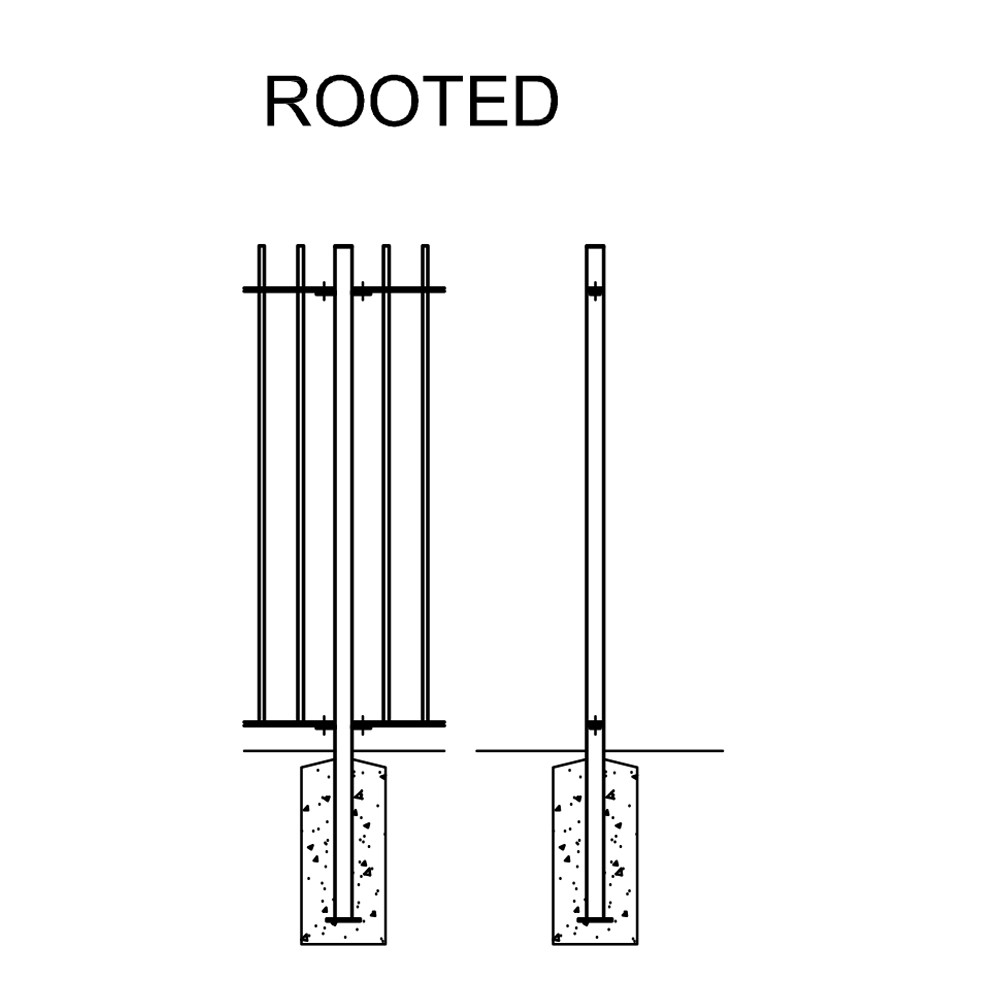
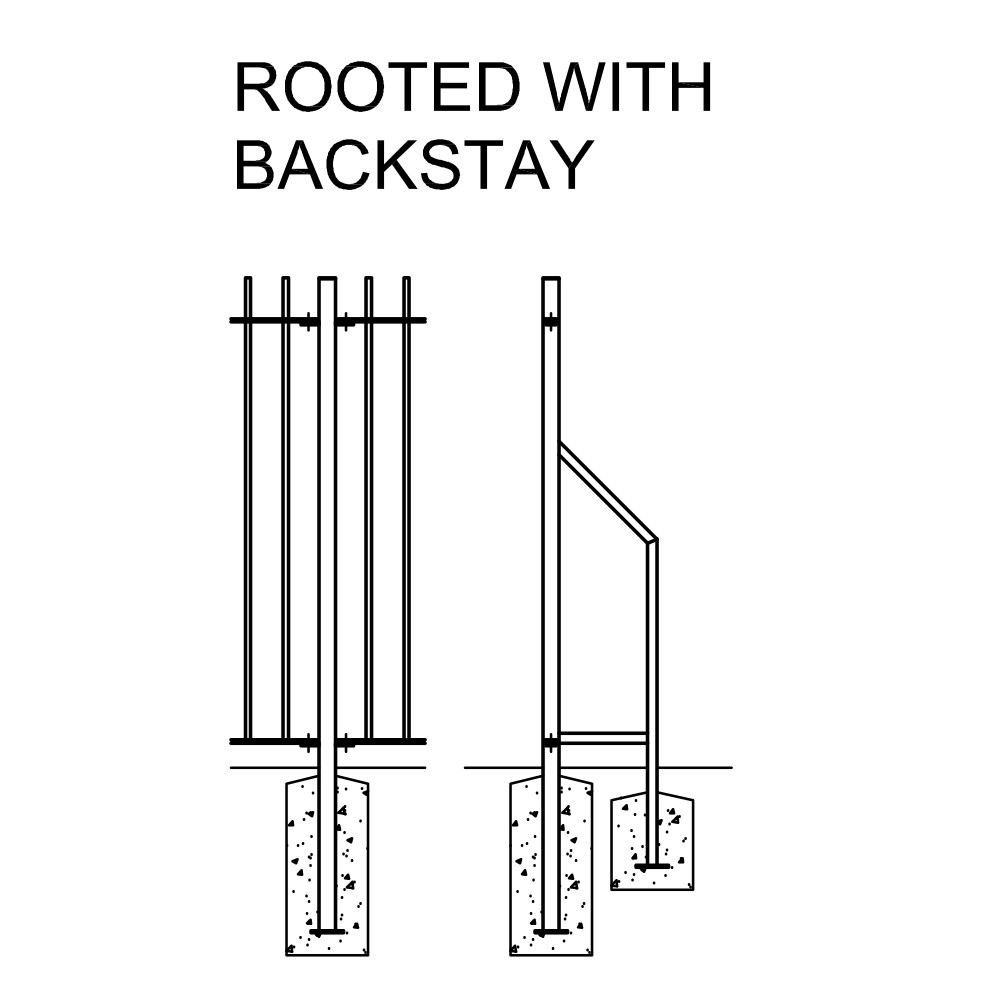
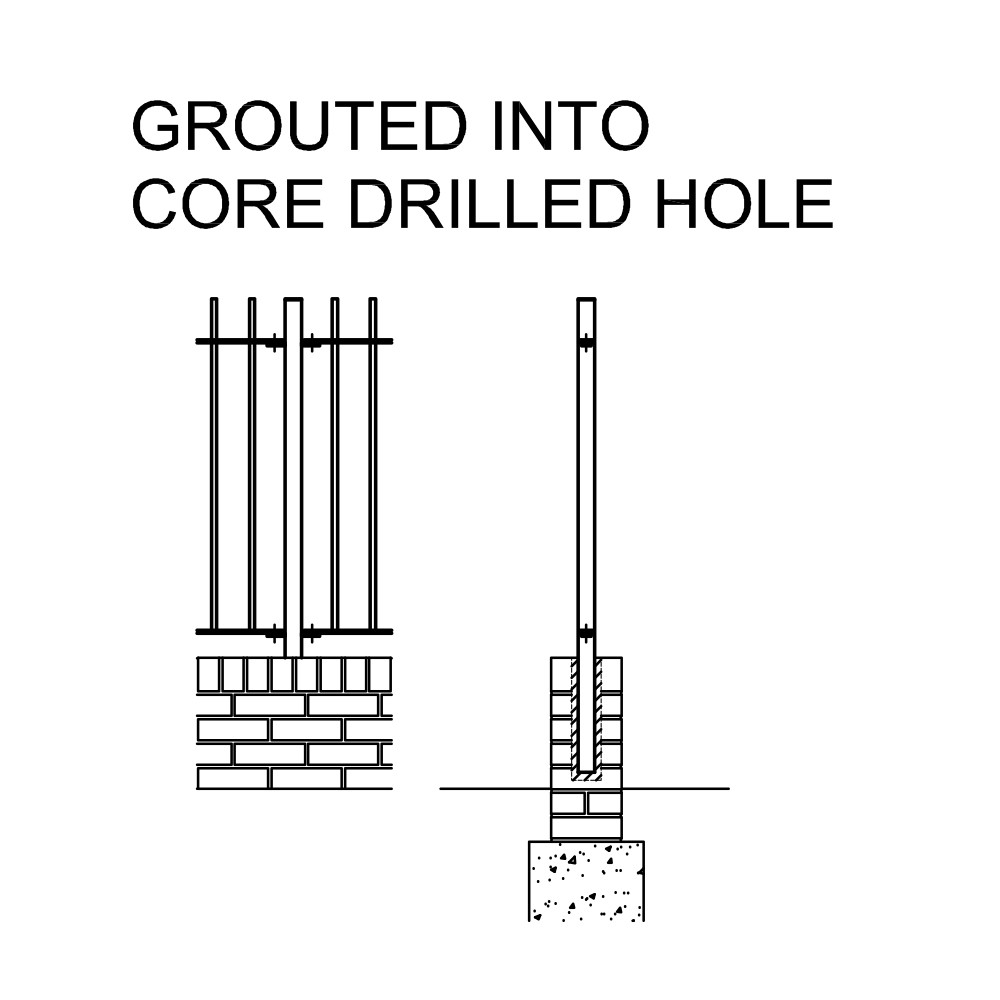
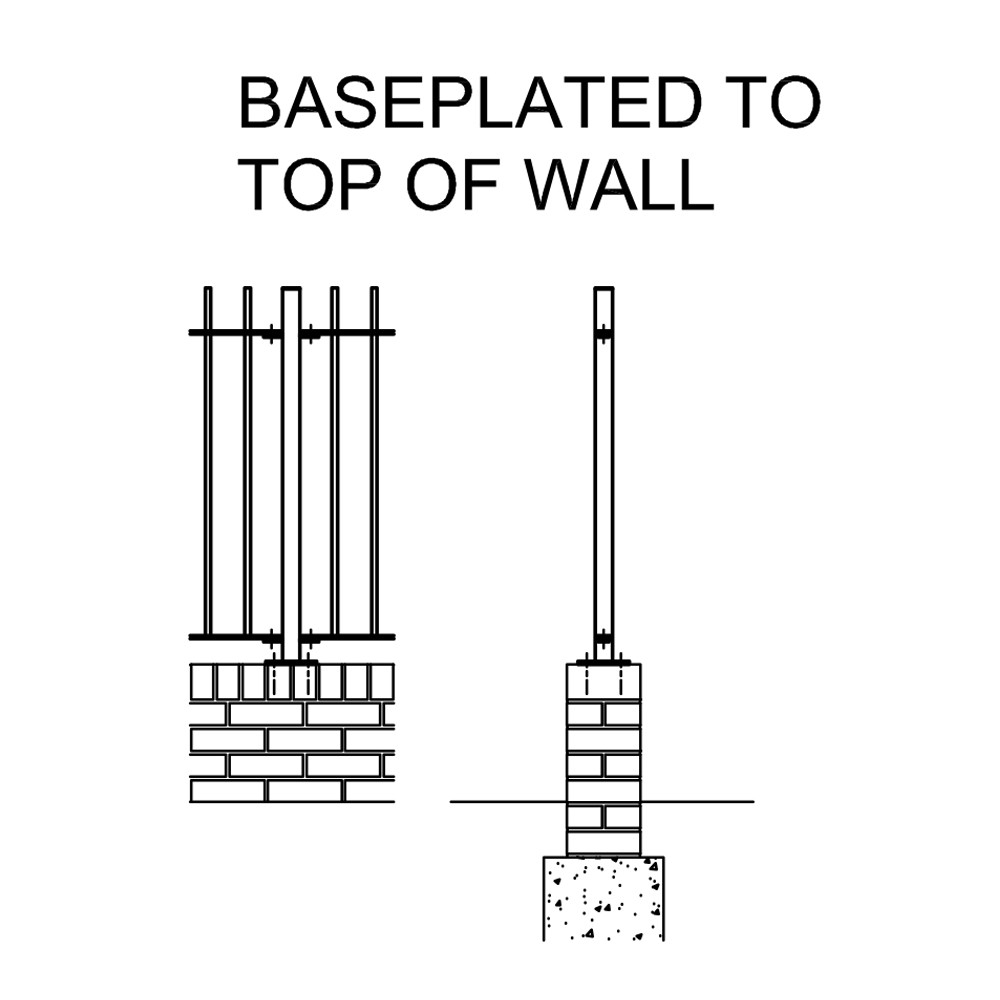
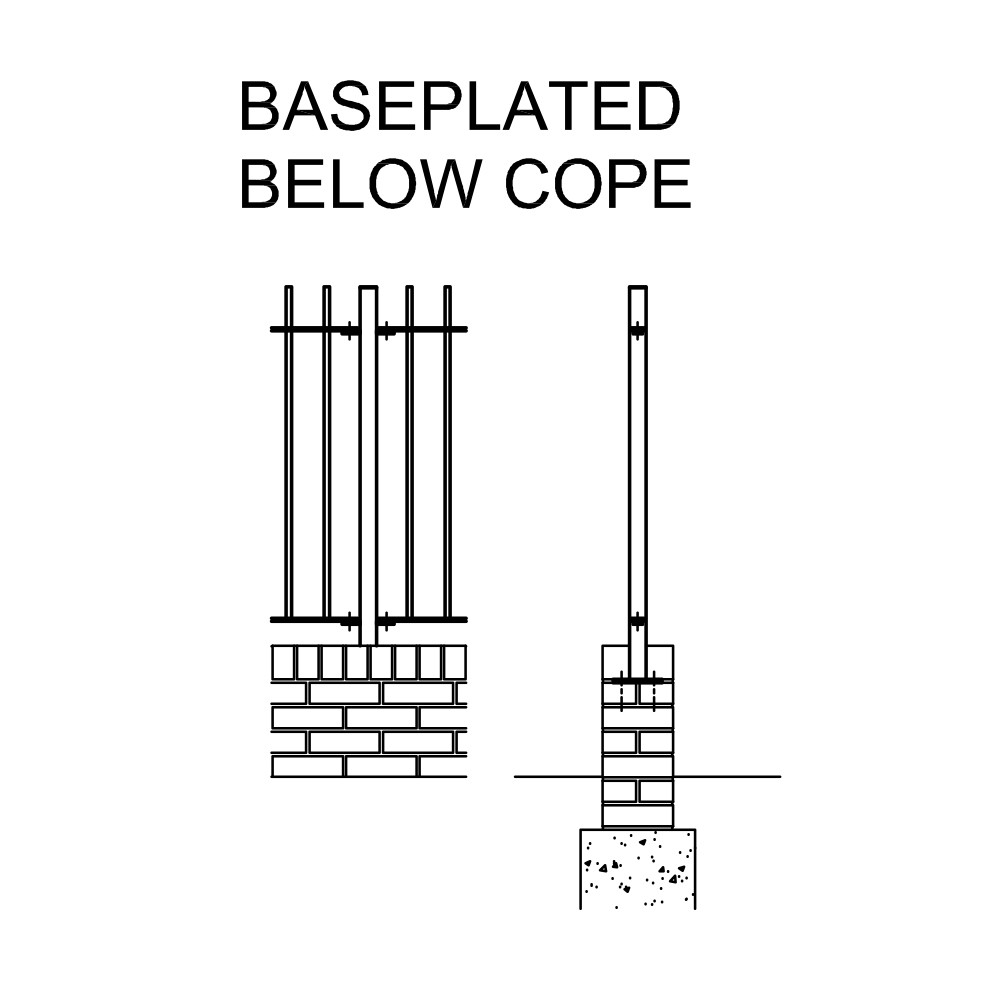
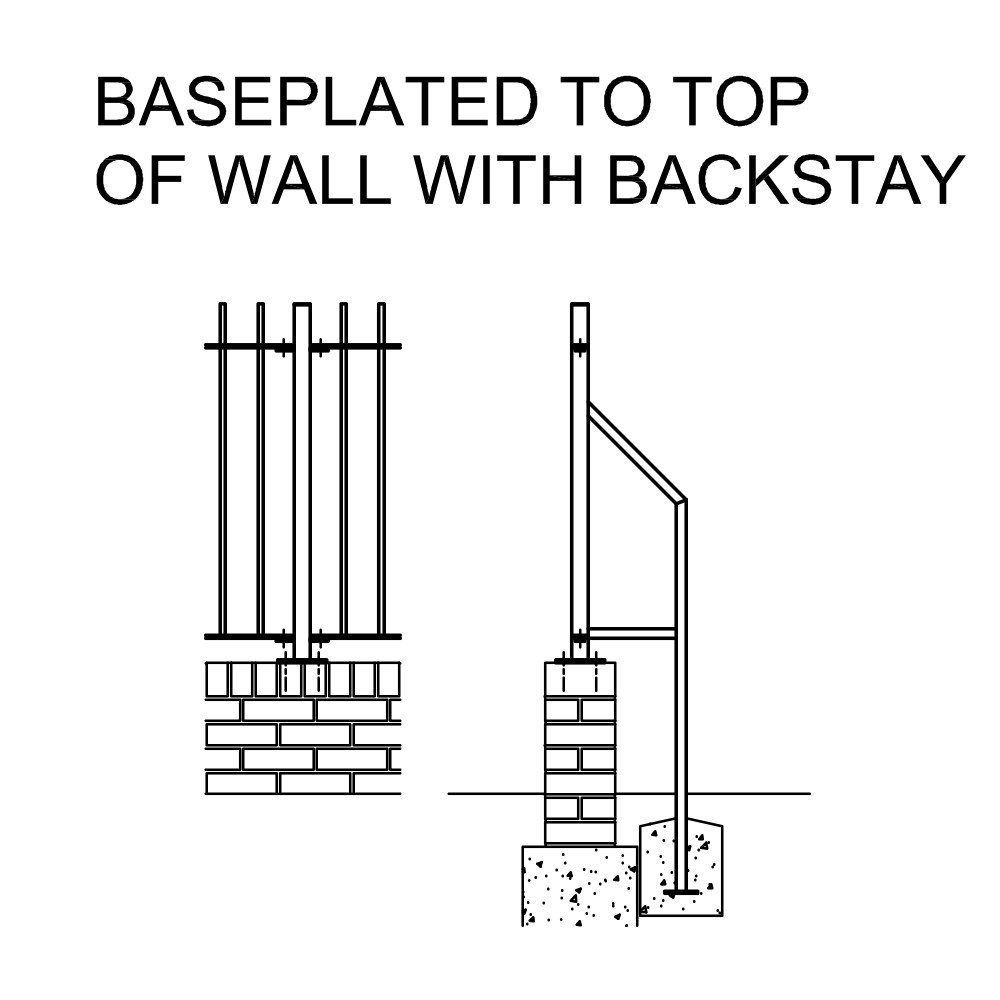
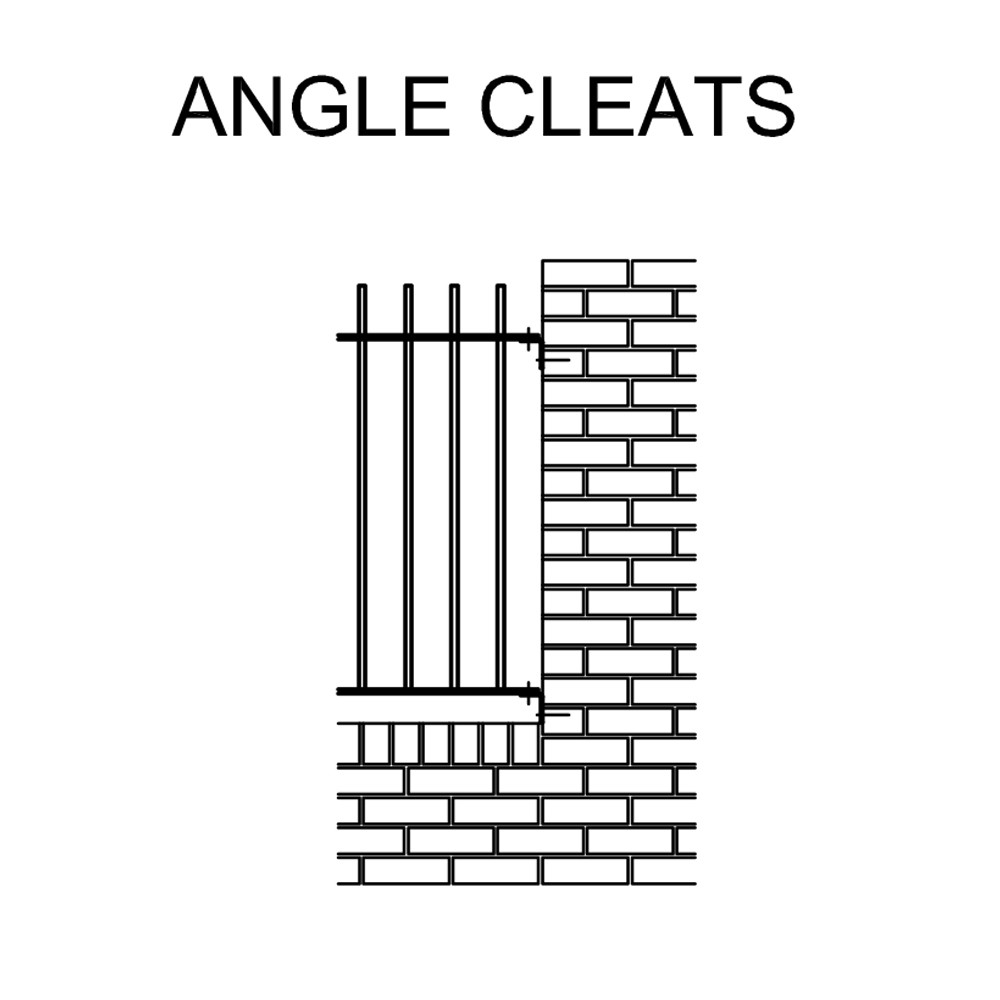

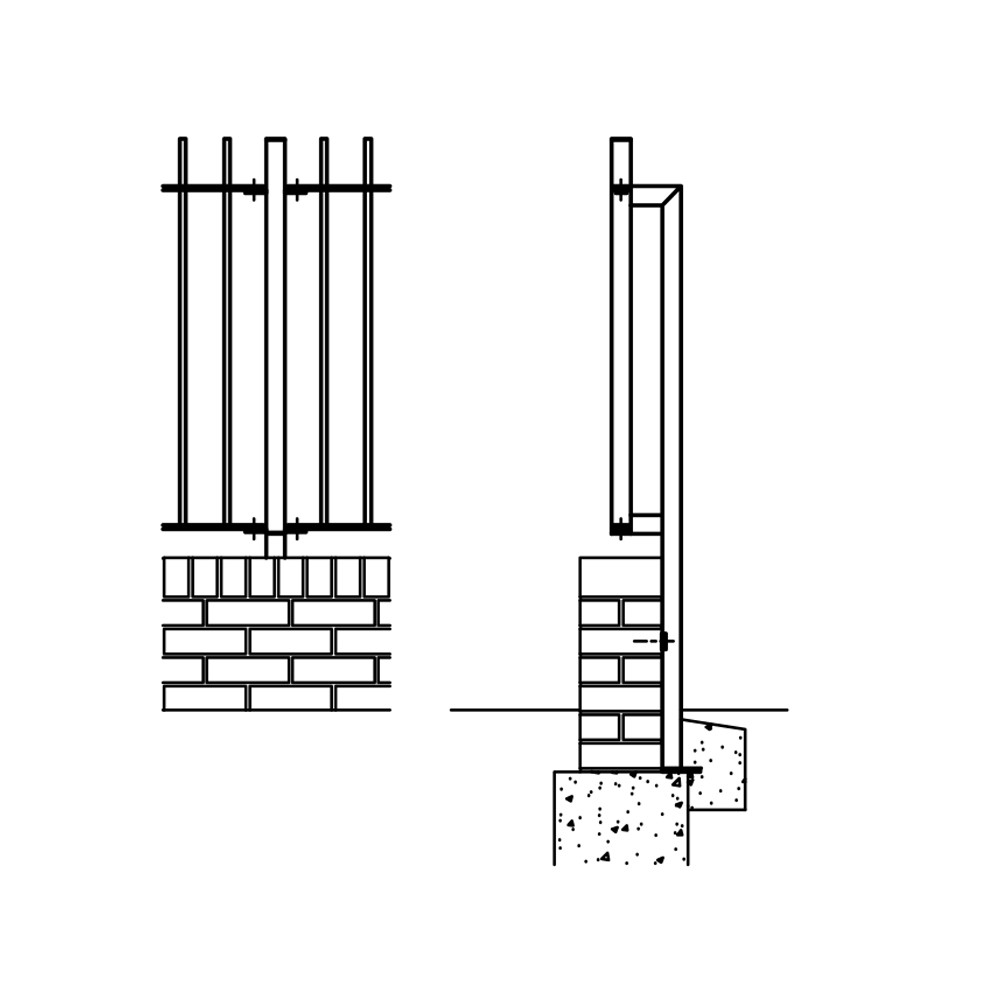
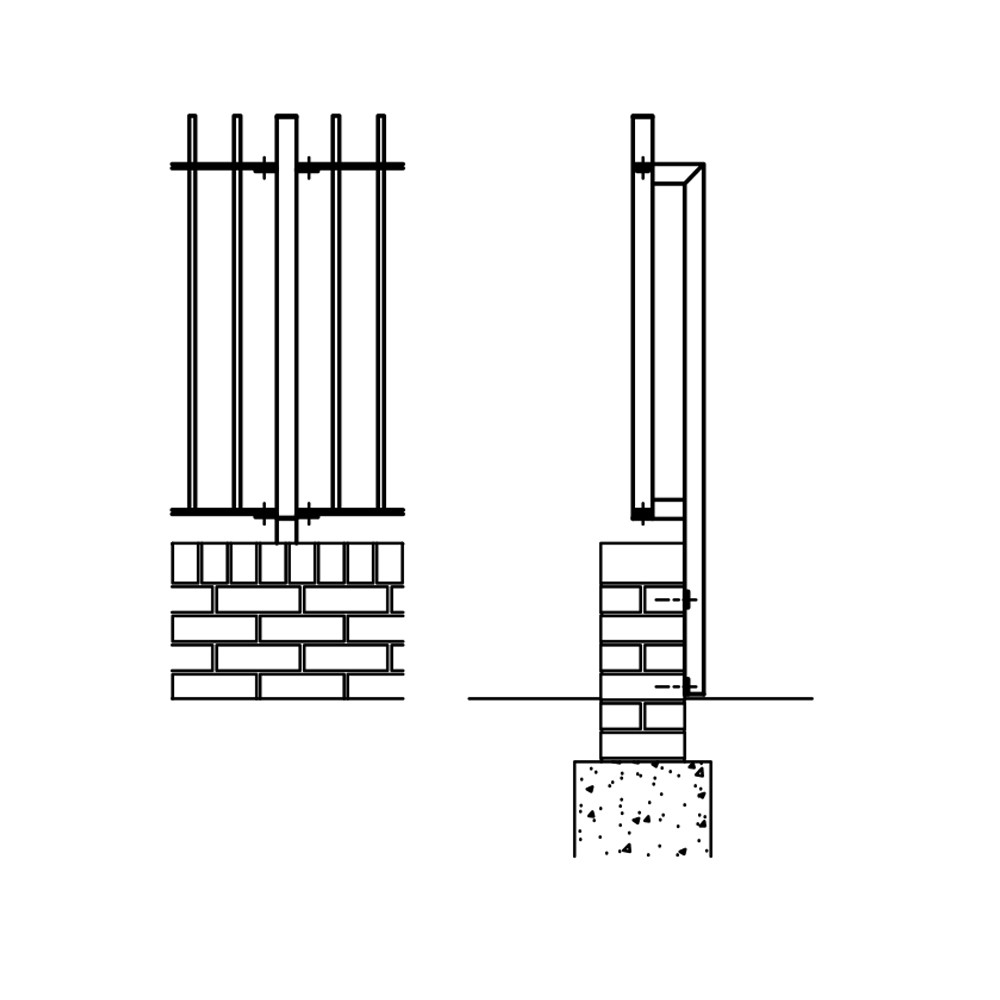
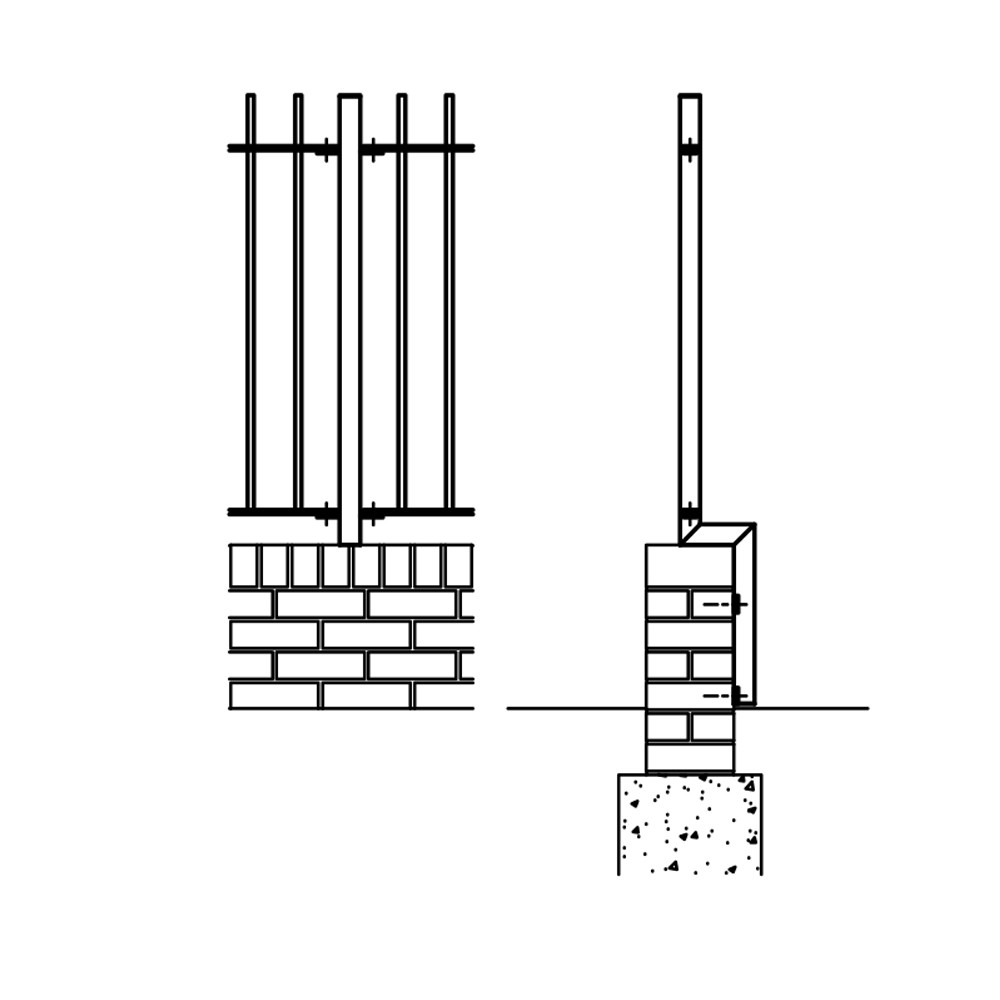

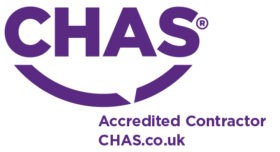
![AFI [MEMBER]](https://alpharail.co.uk/wp-content/uploads/2019/01/AFI-MEMBER-e1556273719380.png)



